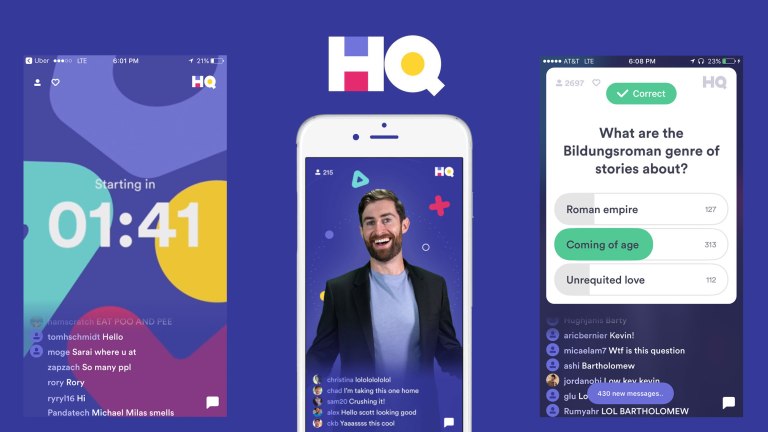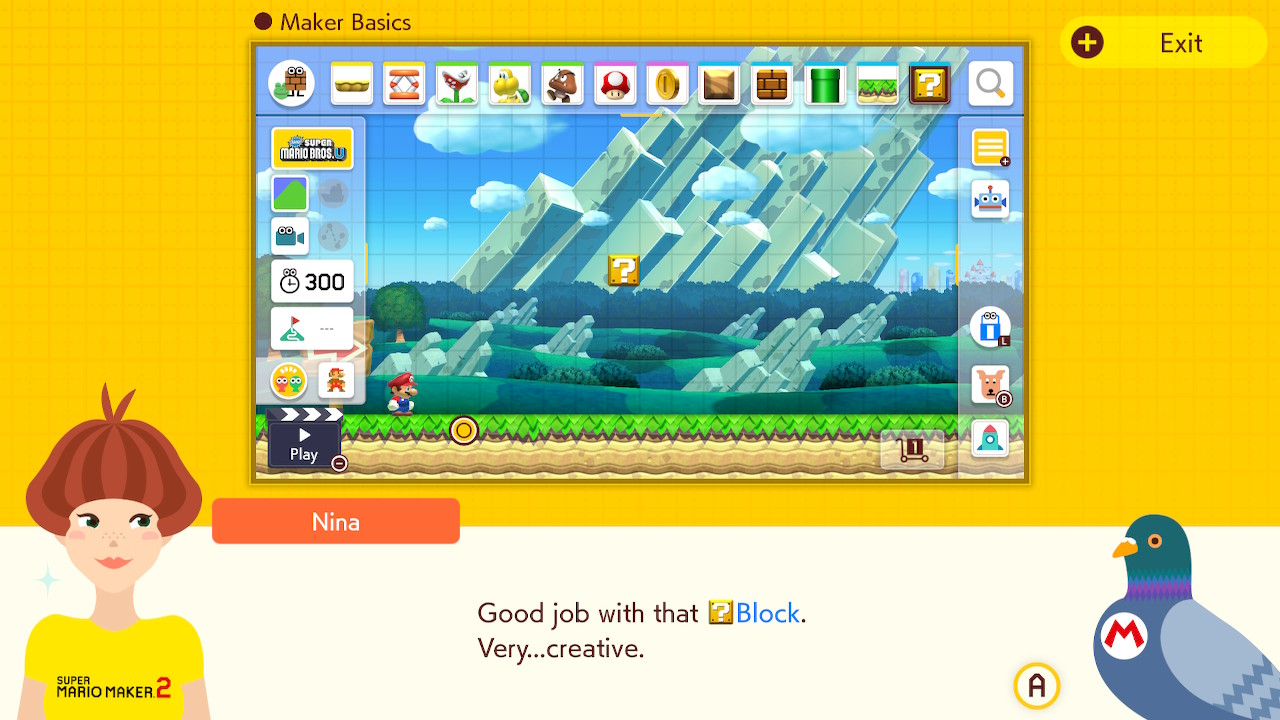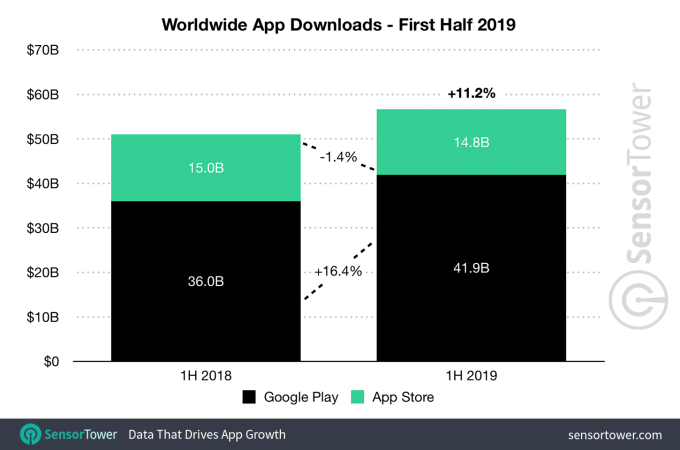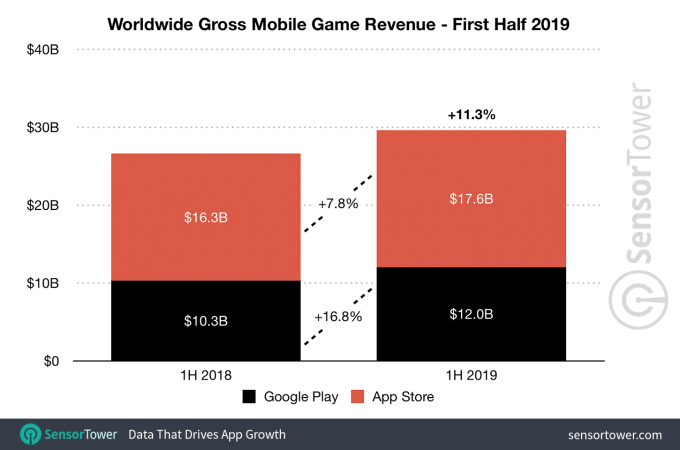HQ Trivia lays off ~20% as it preps subscriptions
HQ Trivia is struggling after a mutiny failed to oust its CEO. Downloads per month are down 92% versus last June according to Sensor Tower. And now four sources confirm that HQ laid off staff members this week. One said about 20% of staff was let go, and another said six to seven employees were departing. That aligns with Digiday reporter Kerry Flynn’s tweet that 7 employees were let go bringing HQ to under 30 (shrinking from 35 to 28 staffers would be a 20% drop).
That will leave the company short-handed as it attempts to diversify revenue with the upcoming launch of monthly subscriptions. “HQ Words Everyday. Coming next month . . . Bigger prizes . . . More ways to win. $9.99/mo. subscription” the company tweeted from the account for its second game, the Wheel Of Fortune-style HQ Words. The company has been trying to regain momentum with new hosts since the departure of Quiz Daddy aka Scott Rogowsky, HQ Trivia’s original host.

The cuts hit HQ’s HR, marketing, and product engineering teams, according to LinkedIn profiles of employees let go. The cuts could further hamper morale at the startup following a tough first half of the year. HQ Trivia and co-founder Rus Yusupov did not respond to repeated requests for comment.

HQ Trivia employees petitioned to remove co-founder Rus Yusupov from the CEO position
Following the tragic death of co-founder and CEO Colin Kroll, Yusupov retook control. But staff found him difficult to work with as he’d allowed the product to stagnate and popularity to decline. Yusupov was slow to make changes to the app, and “no one wanted to work under Rus” a source told me.
That led 20 of 35 staffers to sign a letter to HQ Trivia’s board asking them to remove Yusupov, though it was never formally sent. Yusupov caught wind of the plot and fired two of the leaders of the petition. That further sunk morale, leading to the exit of HQ Trivia’s SVP of brand partnerships and its marketing manager. The board began a search for a new CEO, though it’s unclear how that’s panned out.
Since then, new games HQ teased in April haven’t materialized as its download rate continued to suffer. It’s dropped to the #731 US game on iOS according to AppAnnie. HQ Trivia saw just 827,000 downloads from January through June 2019, down 92% from the 10.2 million it saw in the same time frame in 2018 according to Sensor Tower. That’s the same percentage drop in downloads from June 2019 versus June 2018, indicating Rogowsky’s replacements that started in April couldn’t turn things around.
Interest in the live game show format seems to be waning as a whole. HQ Trivia fan site HQTrivia.fan shut down this week fearing the end was near for the official game, and the (Business) INSIDER-run clone of the game on Facebook Watch called Confetti stopped airing at the end of June.
HQ Words Everyday. Coming next month.
Play HQ Words every day.
Bigger prizes.
More ways to win.
$9.99/mo. subscription.
RT and reply with your username for a chance to win a free year. #wordseveryday
— HQ Words (@hqwords) June 26, 2019
Rather than solely monetizing a waning audience via in-app purchases and sponsorships, HQ Words announced it would debut a $9.99 monthly subscription sometime this month that would grant access to winning “bigger prizes”. This could be a smart way to squeeze more dollars out of a smaller but more diehard audience.
While HQ Trivia was an inspiring approach to mobile gaming, its twice-daily games didn’t fit the always-on nature of mobile. It’s failed build a proper onboarding experience that gives users a taste of it games right away rather than forcing them to wait for the next scheduled match as we suggested over a year ago. Gamers are fickle, craving instant gratification, and HQ hasn’t tried to meet them in middle.
Perhaps there’s a future for HQ on cable television, or as a small but steady business on mobile catering to loyalists. But all the unfortunate events and mismanagement may make it difficult to exceed the $100 million valuation it raised money at during its peak.
Powered by WPeMatico
Superhuman removes email location logging, will turn read receipts off by default
Superhuman, the buzzy and currently invite-only email startup that you might have come across even if you yourself don’t have access if you’ve ever encountered a “Sent via Superhuman” email signature, is making some changes based on community feedback. These include removing location logging altogether, getting rid of all existing location data and turning off read receipts by default and making them an opt-in feature for users.
The email app’s default email tracking behavior (embedding the commonly used advertising tool of a “pixel” in emails to report back to senders info like whether an email’s been opened or not) raised a number of concerns, centered around this blog post by former Twitter design executive Mike Davidson. Davidson’s post generated a lot of community response, and now Superhuman founder Rahul Vohra has issued a response to that response, including a list of actions that his company is taking to address concerns. Specifically, Superhuman’s product changes are focused around mitigating the potential for abuse of sharing location data – which could be very dangerous in the hands of a sender with ill intent for their recipient.
These include immediately stopping any location logging for any emails sent by the service, and also rolling out new versions of the app that don’t show location data in the interface. All existing logged location data will also be deleted so it’s not even discoverable through means other than the UI, Vohra says in a blog post detailing the changes.
Superhuman won’t be getting rid of its “read status” feature entirely however — it’ll still provide info to Superhuman users about whether or not an email was opened. This feature will be turned off by default, however, so it’s on users to activate it. Note that that still doesn’t change anything for recipients of Superhuman emails with read receipts turned on — they don’t get an option to consent to sending read receipts. Finally, Superhuman will enable disabling of remote image loading, which is itself a way to block incoming tracking pixels.
Vohra said on Twitter the reason Superhuman hasn’t issued a response to this previously, despite a few days of heated conversation about their company, is that the startup was considering how best to address the concerns. As Matthew noted in an article Tuesday on the subject, this is actually how discussion and debate should work.
Powered by WPeMatico
Pod Foods gets VC backing to reinvent grocery distribution
Larissa Russell and Fiona Lee founded a cookie startup called Green Pea Cookie in 2014. The cookies were 100% natural, vegan and “handcrafted with love.”
The company failed, but not because the cookies weren’t selling. The business couldn’t keep up with the antiquated wholesale food distribution system’s steep costs. Two incumbent players, United Natural Foods Inc. and KeHE Distributors, essentially controlled its only pathway to grocery stores across the country. So the founders shut down Green Pea and focused their efforts on building the tool Green Pea had needed to survive: Pod Foods, a distribution and logistics platform for emerging food brands.
“We were like so many other young entrepreneurs,” Russell, Pod Foods’ chief executive officer, tells TechCrunch. “I had studied government and economics and did the cookie company because I wanted to create something better for the world but we realized there was a much bigger issue at hand and it wasn’t enough to solve for the end product, we needed to solve for the way the product reached consumers.”

Pod Foods co-founders Fiona Lee (left) and Larissa Russell
“The distribution system hasn’t evolved since World War II,” Lee adds. “For so many years, there’s been little evolution in this space, even since the advent of technology and the internet.”
Today, Pod Foods is announcing a $3 million seed round led by Moment Ventures, with participation from M12 and Unshackled Ventures to fuel the growth of its software and data-enabled platform. The capital follows a $250,000 pre-seed investment from Unshackled, a venture capital firm that invests in immigrant founders and, if necessary, helps them navigate the complex visa process.
Lee immigrated to the U.S. from Singapore five years ago to double down on Green Pea Cookie. Her business partner, Russell, had been handling operations in the U.S. while she helped build the business from her home country. With Pod Foods up and running, the founders now have the opportunity to bring Green Pea back from the dead. Instead, they tell me their focus and efforts are entirely on scaling their B2B software upstart. Green Pea is gone for good.
Pod Foods is an end-to-end platform that connects retailers with manufacturers, facilitating the overly complex wholesale-food distribution market. The startup works with a third-party network that handles both fulfillment and logistics to create a tool beneficial to emerging brands, big retailers and consumers. The company charges retailers on a subscription basis and takes a cut of each transaction. The end goal is to simplify an age-old process, allow startup brands the opportunity to sell products inside big retailers and make great products accessible to customers at a lower price.
The San Francisco-based startup has launched in the Bay Area and Chicago. Currently, it’s working with 350 food brands and 100 retailers. With a fresh funding deal, Pod Foods plans to scale 10x in the next 12 months.
“We want to change the way food is distributed,” Russell said. “We want to turn [the system] on its head so the consumer can get what they would like to buy in retail stores at an affordable price.”
Powered by WPeMatico
Earios is a new podcast network for women creators
It might seem like you’ve now got podcasts covering any and every conceivable topic, but comedy writer and actor Maria Blascucci argued that there’s still “this whole untapped market” — namely, podcasts created by women.
Certainly, some of the most successful shows are hosted by women — but if you look at a list of popular podcasts, you’ll see a lot of men. Similarly, most of the major podcasting networks and companies (like Gimlet, Crooked Media and Earwolf) were founded by men.
So Blascucci teamed up with her friends Amanda Lund (also a writer and actor) and Priyanka Mattoo (a former agent at United Talent Agency and William Morris Endeavor) and created a new company called Earios. They raised $26,000 on Kickstarter last year, and launched their first shows this week.
“As we saw the landscape of podcasts changing and becoming more like television … we started to realize that we might as well carve out a space for ourselves, a community of funny women, instead of just letting it happen to us,” Lund told me.
The goal is to launch 12 shows this year, including four this week — Filling the Void (where “Love” creator Lesley Arfin talks to her friends about their passions and hobbies), Foxy Browns (with Mattoo and Camille Blackett discussing beauty and wellness from the perspective of women of color), Web Crawlers (where Melissa Stetten and Ali Segel explore strange and mysterious things on the web) and The Big Ones (where Blascucci and Lund discuss moral dilemmas).
Upcoming shows include titles from comedian Margaret Cho and musician Feist.
“What we have been trying to do is just trying to do projects and [find] really interesting voices and perspectives that alone will make our shows stand out,” Lund said. “With podcasting, there is a template for it. It sounds like this, and your art looks like this, and we’re conscious of not necessarily falling into that same template. We’re still trying to do things outside of the box whenever possible and keep the medium cracked open, in a way.”
As for monetization, while there are startups exploring subscriptions and paywalls (with some hiccups), Earios is focused on running ads in partnership with Acast.
Mattoo suggested that there’s a similar untapped market here, recalling that as she talked to ad sales companies, “The refrain we heard over and over again was, ‘We have all these ads targeted at women and nowhere to put them.’ ”
Powered by WPeMatico
With Super Mario Maker 2, Nintendo both unleashes and leashes creators
Nintendo’s Mario Maker series is among the most generous gifts the company could have given to its fans, and the new installment on Switch is better than its predecessor in every way. Yet despite the freedom and encouragement it gives, it’s hard not to feel a gentle tug groundward when your ambitions begin to soar.
For those unfamiliar with Mario Maker, the original was a totally unexpected joy on the Wii U and one of the few games that truly took advantage of that console’s unusual hardware. It allowed players to use the touchscreen and stylus to put together Mario levels in a variety of styles, and the resulting number and complexity of creations boggled minds worldwide.
The sequel, Super Mario Maker 2, announced in February and released at the end of June, is a natural evolution of the previous game. It adds new items, new styles, new ways to sculpt the landscape and a variety of other complexifiers like conditions you can impose on players: no jumping, carry this item to the goal and so on.

A welcome addition is the robust tutorial for the maker mode, featuring the weird/cute duo Nina and Kawamura (a girl and a pigeon) walking the player through the tools and providing what amounts to platformer design 101. There’s also a single-player campaign: A hundred unconnected levels that let you have some good old Nintendo-designed Mario fun, but also serve as inspiration for how to use various blocks and level styles.

Within days of release, the “Course World” is already brimming with strange and fun levels to play, full of ingenious ideas and uses for blocks and enemies that will have you shaking your head — and biting your controller with rage. There’s even a whole category for “auto-Mario” levels (a strange and wonderful genre that sprang out of the original Mario Maker) that take the player through an adventure sometimes without any input at all.
Importantly, this game adds a few things that Mario levels really need: locked doors and keys, for instance, or checkpoints so players don’t have to replay a punishing section. That opens up things considerably and already I have seen lots of interesting levels taking advantage of this to make you visit multiple areas, beat a certain enemy before proceeding, and such.

This devious little level is nothing like Mario, yet uses Mario rules
I’ll let other reviews go into detail about the various more granular improvements the game makes. Suffice it to say here that it’s a ton of fun, making levels is hard and between the single-player, multiplayer and Course World modes, Mario Maker 2 more than justifies its purchase price. For my part I want to call attention to something I feel is important about the game and the carefully thought-out limitations it places on creators.
Nintendo’s zeal for seeking and destroying copyright violations is well known; just last week we had Mario Royale shut down almost instantly. And the company is also well known for its highly conservative stance on licensing, in some ways at least — for instance, only ever letting Zelda games appear on Nintendo consoles rather than having them come out on Sony and Microsoft platforms as well. There are plenty of good reasons for that, I’m just making a note of it.
Nintendo’s fan base, however, is the only one that rivals it for zeal, and over the years they have found many ways to modify or reuse the properties that Nintendo has been happy to either let lie or recycle tamely via Virtual Console. Nintendo would never, for example, have made Mario Royale. Nor would it make something like the A Link to the Past Randomizer, which changes the locations of items in the classic game to make each playthrough unique. (A similar one exists for Super Metroid and other beloved and much-played classics.)
Again, Nintendo’s philosophy forbids many of these things — their idea of games is a much more pure one and it’s hard to fault it when the results are things like Super Mario Odyssey and Breath of the Wild. But players want more, and they regularly do whatever they can to break Nintendo’s creations out of the carefully manicured walled gardens the company has long cultivated for them.
Enter Mario Maker.
This title essentially performs a bleed on the community that is so fervently dedicated to playing Nintendo’s games outside of Nintendo’s rules. By letting players make their own levels, and by giving them a tool that’s really quite powerful to do so, they remove a great deal of the pressure that has built up and resulted in things like rom hacks.

A course I’m working on: Infiltrating Moleville
The second game especially opens up the creative floodgates, since the new items and capabilities make possible the complex levels that have made up the best of Mario from the beginning. Straight-up platforming is always fun, but Nintendo’s level designers have learned to theme each level with a specific skill set or feel in mind, and the sequel’s tools enable that to take place in a much greater way than before.
And yet there are some purposeful omissions. The most purposeful is the lack of any ability to tie together levels using an overworld map or even a 1-1, 1-2, 1-3 structure. While it’s possible some creators may be able to circumvent this in a small way, this is a clear sign from Nintendo that this is a tool for making levels, not games.
Withholding higher structure (that could be as simple as designing playlists) is a strategic move that reserves that structure for official games. And allowing for easy sharing of levels and playlists, instead of relying on Nintendo’s own algorithms and onerous number-based sharing system, makes it trivial for the company to control the means of distribution.
 Again, I’m not saying they shouldn’t, exactly — and there will be thousands and thousands of levels worth playing, more than any one player could possibly want. But what’s clear from the popularity of Mario Maker is that millions of players also want to see Nintendo’s creations unbound by Nintendo’s strict rules. And while Mario Maker 2 loosens those rules considerably, it also indicates the limits of what Nintendo is willing to allow its community to do.
Again, I’m not saying they shouldn’t, exactly — and there will be thousands and thousands of levels worth playing, more than any one player could possibly want. But what’s clear from the popularity of Mario Maker is that millions of players also want to see Nintendo’s creations unbound by Nintendo’s strict rules. And while Mario Maker 2 loosens those rules considerably, it also indicates the limits of what Nintendo is willing to allow its community to do.
That said, within those limits there are near infinite variations and, in fact, it’s probable that the game’s creators deliberated intensely on what to include and what to exclude. I’m desperately missing the invincible giant moles from SMW, but would having them (and a dozen other rare critters) in the enemy selection just clutter it up? I’d like to have an overworld, but for the casual maker or speedrunning level maker, wouldn’t that really just be an extra step that would be skipped more often than not? The intention of the game is to facilitate creation, but part of that is knowing what tools not to provide.
Ultimately my wish that Nintendo demolish the walls of its garden amounts to nothing more than asking them to give away the keys to the castle, so to speak. And it’s not like I’m being oppressed here — I can barely put together a decent course of my own, and others are happy to work within these constraints. Not being a genius Maker myself, I tend to see the restrictions rather than the possibilities.
I just want more Mario, and in fact more Mario than Nintendo is willing to give. With Mario Maker it has secured me a constant drip-feed of Mario-adjacent content that’s just enough to keep me playing but also just limited enough that I look forward with immense impatience to the next “real” game. Whether that’s a kindness or a cruelty I can’t say, but whatever it is, it’s going to take up a hell of a lot of my time over the next couple of years.
Powered by WPeMatico
Bird investor Upfront Ventures eyes $250M growth fund
Upfront Ventures, a Los Angeles-based venture capital firm, has filed paperwork with the U.S. Securities and Exchange Commission to raise its third growth-stage investment fund.
Though the firm typically invests at the seed and Series A, capital from Upfront Growth III will be used for follow-on or late-stage deals.
The firm, known for its investments in Bird, Goat, Ring, ThredUP and Parachute, plans to raise $250 million for the effort. Mark Suster and Yves Sisteron, listed on the filing, lead the firm as managing partners. Upfront’s investor line-up also includes partners Kobie Fuller, Greg Bettinelli, Kara Nortman and Kevin Zhang.
One of the oldest VCs rooted in LA, Upfront previously closed on $400 million for its sixth flagship early-stage fund in 2017.
LA is on pace for a banner year of VC investment, attracting $33 billion across more than 1,000 deals already in 2019, according to PitchBook. Last year, companies headquartered in LA raised more than $60 billion.
Powered by WPeMatico
Pax Labs CEO Bharat Vasan and serial founder Keith McCarty are coming to Disrupt SF
The legalization of cannabis and hemp for medicinal and recreational use in states across the U.S. and in Canada has opened up a huge vein of green, green cash for startups.
Two entrepreneurs tantalized early on by the smell of dank profits are Pax Labs CEO Bharat Vasan and Eaze and Wayv founder Keith McCarty. They will join us on stage at Disrupt SF to hash out the opportunities for investors and help founders avoid seeing their vision go up in smoke.
Bharat Vasan took over as chief executive at Pax Labs in February 2018. Before that, he served as president and COO at August Home, which sold to Assa Abloy in 2017. Prior to August Home, Vasan was co-founder and COO at Basis Science, which sold to Intel in 2018 for a reported $100 million. Vasan was also at Electronic Arts from 2002 to 2010, where he went from senior manager of Mergers & Acquisitions to serving as CFO and COO.
Pax Labs’ valuation, as of its latest $420 million funding round in April of this year, was at $1.7 billion. The company, which makes cannabis vaporizers, has plans to use the funding for international expansion and new products, but Vasan also hinted at a data play in this new market.
“People know about different kinds of alcohol,” said Vasan, in an interview in April. “They may know that they’re a beer person or a wine person. But none of that exists within cannabis. They see names like ‘Lemon Haze’ and ‘Cherry Fizz’ and they don’t know what that is. These are all really awesome names for a band but not great to let you know what you’re consuming. We want to provide more clarity around what that means.”
How Pax Labs plans to do this is unclear, but we’re hoping to learn more about it in October.
Keith McCarty, founder and CEO of Wayv, has a rich history in the tech space and as an entrepreneur. After spending five years at Yammer, and then Microsoft following the acquisition, McCarty went on to found Eaze, a legal cannabis delivery platform.
And while Eaze has continued to grow alongside the cannabis market itself, it put a new problem on McCarty’s radar. The supply chain logistics of the cannabis industry, combined with the fast-changing regulatory market, presents an opportunity for one startup to solve for this problem. McCarty wants that to be Wayv, a new venture that has raised $5 million in funding.
Wayv wants to be the Eaze of the enterprise, connecting licensed cannabis companies to licensed brands to provide next-day delivery of cannabis products.
These two titans will join us at Disrupt SF in October to discuss the changes in this market and the opportunities appearing before the tech world as a result of those changes.
Disrupt SF runs October 2 – October 4 at the Moscone Center in San Francisco. Tickets are available here.
Powered by WPeMatico
Capital One CTO George Brady will join us at TC Sessions: Enterprise
When you think of old, giant mainframes that sit in the basement of a giant corporation, still doing the same work they did 30 years ago, chances are you’re thinking about a financial institution. It’s the financial enterprises, though, that are often leading the charge in bringing new technologies and software development practices to their employees and customers. That’s in part because they are in a period of disruption that forces them to become more nimble. Often, this means leaving behind legacy technology and embracing the cloud.
At TC Sessions: Enterprise, which is happening on September 5 in San Francisco, Capital One executive VP in charge of its technology operations, George Brady, will talk about the company’s journey from legacy hardware and software to embracing the cloud and open source, all while working in a highly regulated industry. Indeed, Capital One was among the first companies to embrace the Facebook-led Open Compute project and it’s a member of the Cloud Native Computing Foundation. It’s this transformation at Capital One that Brady is leading.
At our event, Brady will join a number of other distinguished panelists to specifically talk about his company’s journey to the cloud. There, Capital One is using serverless compute, for example, to power its Credit Offers API using AWS’s Lambda service, as well as a number of other cloud technologies.
Before joining Capital One as its CTO in 2014, Brady ran Fidelity Investment’s global enterprise infrastructure team from 2009 to 2014 and served as Goldman Sachs’ head of global business applications infrastructure before that.
Currently, he leads cloud application and platform productization for Capital One. Part of that portfolio is Critical Stack, a secure container orchestration platform for the enterprise. Capital One’s goal with this work is to help companies across industries become more compliant, secure and cost-effective operating in the public cloud.
Early-bird tickets are still on sale for $249; grab yours today before we sell out.
Student tickets are just $75 — grab them here.
Powered by WPeMatico
What everyone at a startup needs to know about immigration
The immigration process in the U.S. has become a high-stakes undertaking for employers, workers, and entrepreneurs. Predictability has eroded. Processing times have soared. And any mistake or misstep now has dire consequences.
Over the past three years, immigration policies and procedures have been in a state of flux and the process has become more unforgiving for even the smallest mistakes. Putting your best foot forward is crucial. Employers and individuals need to formulate a long-term strategy and backup options to stay protected.
The increase in Requests for Evidence and the backlog for many visa and green card categories has meant longer waiting times. What’s more, the Trump administration’s recent decision to close all USCIS’s international offices—and shift that workload back to the U.S.—is expected to compound the backlogs and delays.
We are seeing these issues affect startups every day. My law firm works with hundreds of startups every year to help them and their employers figure out their immigration paperwork. The overall piece of advice we give is to decide on a specific goal based on a deep understanding of the company and the individual and by examining the options strategically.
Then, you can figure out the right approach for a visa, green card, or citizenship application. Regardless of my personal interest in the matter, now more than ever, I recommend consulting with an experienced immigration attorney who can handle the process with integrity, creativity, compassion, and rigor.
What employers should know
The new normal for immigration means increased employee recruiting and retention costs for employers. However, hiring immigrants remains possible.
Powered by WPeMatico
App revenue tops $39 billion in first half of 2019, up 15% from first half of last year
App store spending is continuing to grow, although not as quickly as in years past. According to a new report from Sensor Tower, the iOS App Store and Google Play combined brought in $39.7 billion in worldwide app revenue in the first half of 2019 — that’s up 15.4% over the $34.4 billion seen during the first half of last year. However, at that time, the $34.4 billion was a 27.8% increase from 2017’s numbers, then a combined $26.9 billion across both stores.
Apple’s App Store continues to massively outpace Google Play on consumer spending, the report also found.
In the first half of 2019, global consumers spent $25.5 billion on the iOS App Store, up 13.2% year-over-year from the $22.6 billion spent in the first half of 2018. Last year, the growth in consumer spending was 26.8%, for comparison’s sake.
Still, Apple’s estimated $25.5 billion in the first half of 2019 is 80% higher than Google Play’s estimated gross revenue of $14.2 billion — the latter a 19.6% increase from the first half of 2018.
The major factor in the slowing growth is iOS in China, which contributed to the slowdown in total growth. However, Sensor Tower expects to see China returning to positive growth over the next 12 months, we’re told.
To a smaller extent, the downturn could be attributed to changes with one of the top-earning apps across both app stores: Netflix.
Last year, Netflix dropped in-app subscription sign-ups for Android users. Then, at the end of December 2018, it did so for iOS users, too. That doesn’t immediately drop its revenue to zero, of course — it will continue to generate revenue from existing subscribers. But the number will decline, especially as Netflix expands globally without an in-app purchase option, and as lapsed subscribers return to renew online with Netflix directly.
In the first half of 2019, Netflix was the second highest earning non-game app with consumer spending of $339 million, Sensor Tower estimates, down from $459 million in the first half of 2018. (We should point out the firm bases its estimates on a 70/30 split between Netflix and Apple’s App Store that drops to 85/15 after the first year. To account for the mix of old and new subscribers, Sensor Tower factors in a 25% cut. But Daring Fireball’s John Gruber claims Netflix had a special relationship with Apple where it had an 85/15 cut from year one.)
In any event, Netflix’s contribution to the app stores’ revenue is on the decline.
In the first half of last year, Netflix had been the No. 1 non-game app for revenue. This year, that spot went to Tinder, which pulled in an estimated $497 million across the iOS App Store and Google Play, combined. That’s up 32% over the first half of 2018.

But Tinder’s dominance could be a trend that doesn’t last.
According to recent data from eMarketer, dating app audiences have been growing slower than expected, causing the analyst firm to revise its user estimates downward. It now expects that 25.1 million U.S. adults will use a dating app monthly this year, down from its previous forecast of 25.4 million. It also expects that only 21% of U.S. single adults will use a dating app at all in 2019, and that will only grow to 23% by 2023.
That means Tinder’s time at the top could be overrun by newcomers in later months, especially as new streaming services get off the ground (assuming they offer in-app subscriptions); if TikTok starts taking monetization seriously; or if any other large apps from China find global audiences outside of China’s third-party app stores.
For example, Tencent Video grossed $278 million globally in the first half of 2019, outside of the third-party Chinese Android app stores. That made it the third-largest non-game app by revenue. And Chinese video platform iQIYI and YouTube were the No. 4 and No. 5 top-grossing apps, respectively.
Meanwhile, iOS app installs actually declined in the first half of the year, following the first quarter that saw a decline in downloads, Q1 2019, attributed to the downturn in China.
The App Store in the first half of 2019 accounted for 14.8 billion of the total 56.7 billion app installs.
Google Play installs in the first half of the year grew 16.4% to 41.9 billion, or about 2.8 times greater than the iOS volume.

The most downloaded apps in the first half of 2019 were the same as before: WhatsApp, Messenger and Facebook led the top charts. But TikTok inched ahead of Instagram for the No. 4 spot, and it saw its installs grow around 28% to nearly 344 million worldwide.
In terms of mobile gaming specifically, spending was up 11.3% year-over-year in the first half of 2019, reaching $29.6 billion across the iOS App Store and Google Play. Thanks to the fallout of the game licensing freeze in China, App Store revenue growth for games was at $17.6 billion, or 7.8% year-over-year growth. Google Play game spending grew by 16.8% to $12 billion.
The top-grossing games, in order, were Tencent’s Honor of Kings, Fate/Grand Order, Monster Strike, Candy Crush Saga and PUBG Mobile.

Meanwhile, the most downloaded games were Color Bump 3D, Garena Free Fire and PUBG Mobile.
Image credits: Sensor Tower
Powered by WPeMatico




